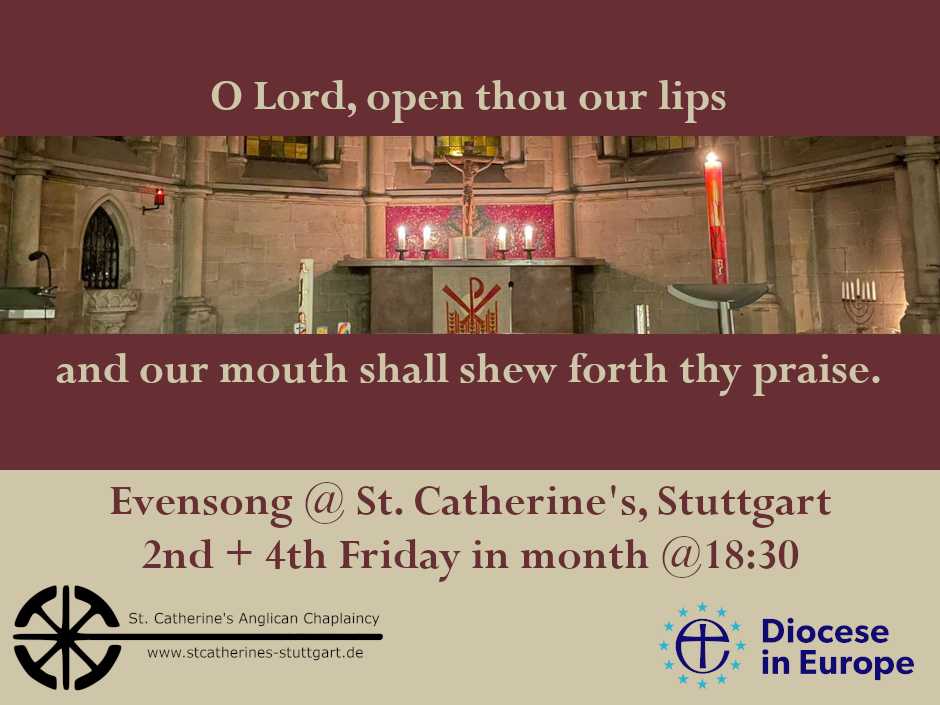Section B: Parochial Church Council
MEMBERSHIP
Members
M15(1) The members of the CC are –
(a) every clerk in Holy Orders who is beneficed in or licensed to the chaplaincy, PTO
(b) any clerk in Holy Orders who is authorised to chair meetings of the CC under Rule M26,
(c) any lay worker licensed to the chaplaincy,
(e) the churchwardens of the chaplaincy,
(f) any person chosen as a churchwarden of the chaplaincy but not yet admitted to office as such,
(g) any deputy churchwarden who is an ex officio member under a scheme under Rule M34 or M35,
(h) if the annual meeting decides that one or more of the readers licensed to the chaplaincy or to an area including the chaplaincy whose names are on the roll of the chaplaincy should be members, the reader or readers in question,
(i) every person whose name is on the roll of the chaplaincy and who is a lay member of a deanery synod, a diocesan synod or the General Synod,
(j) the elected representatives of the laity, with the number being determined under paragraphs (8) and (9), and
(k) any clerk in Holy Orders, or any actual communicant aged 16 or over, whom the CC decides to co-opt as a member, with the number being determined under paragraph (10).
(4) A person is eligible for membership under paragraph (1)(e), (f) or (g) only if the person is an actual communicant whose name is on the roll of the chaplaincy.
(5) For the purposes of paragraph (1)(i), a lay member of a deanery synod who is a parochial representative elected by the annual meeting of the chaplaincy is eligible only for membership of the CC for the chaplaincy, even if the person’s name is on the roll of one or more other chaplaincyes.
(6) For the purposes of paragraph (1)(i), a lay member of a deanery synod who is a member of the synod otherwise than by virtue of election as a parochial representative and whose name is on the roll of the chaplaincy and on the roll of one or more other chaplaincyes –
(a) must choose one of the chaplaincyes concerned, and
(b) is accordingly eligible only for membership of the CC for the chaplaincy if it is the chaplaincy which he or she chooses.
(7) For the purposes of paragraph (1)(i), a lay member of a diocesan synod or a member of the House of Laity of the General Synod whose name is on the roll of the chaplaincy and on the roll of one or more other chaplaincyes –
(a) must choose one of the chaplaincyes concerned, and
(b) is accordingly eligible only for membership of the CC for the chaplaincy if it is the chaplaincy which he or she chooses.
(8) The number of representatives of the laity for the purposes of paragraph (1)(j) is –
(a) if there are no more than 50 names on the roll, six; – this was the case at the ACM 2020
(b) if there are more than 50 but no more than 100, nine; – this was the case at ACM 2019
(c) if there are more than 100, a further three per hundred names and, where the number of names on the roll is not divisible by 100 without fraction or remainder, for the fraction or remainder, up to a maximum of 15.
(9) The annual meeting may by resolution vary the number of representatives there would otherwise be for the chaplaincy under paragraph (8); but a resolution under this paragraph does not take effect before the next annual meeting.
(10) The number of members under paragraph (1)(k) is either two or any greater number which does not exceed one-fifth of the number of members under paragraph (1)(j).
(11) A person whose name is removed from the roll of the chaplaincy on a revision under Rule 4 ceases to be a member of the CC on the date on which the revised roll is completed.
(12) A person who does not make a fresh application for enrolment when a new roll of the chaplaincy is being prepared ceases to be a member of the CC on the date on which the new roll is completed.
(13) A person who is or becomes disqualified as a member of the CC (whether under Part 7 or otherwise) ceases to be a member on the date on which the disqualification takes effect.
(14) In a case within paragraph (11) or (12), the CC may nonetheless co-opt the person concerned as a member under paragraph (1)(k).
Term of office: representatives of the laity
M16(1) A person who is a member of the PCC under Rule M15(1)(j) (representatives of laity) holds office as such for a period which –
(a) begins with the conclusion of the annual meeting at which the person was elected as a representative of the laity, and
(b) ends with the conclusion of the third subsequent annual meeting.
(2) But the annual meeting may, despite paragraph (1)(b), decide that the members under Rule M15(1)(j) are to retire at the conclusion of the annual meeting following their election.
(3) A decision under paragraph (2) does not affect the term of office of a member due to retire from the PCC at the conclusion of the annual meeting held after the one at which the decision was taken.
(4) A decision under paragraph (2) must be reviewed by the annual meeting at least once every six years; and if, on the review, the annual meeting revokes the decision, paragraph (1) applies unless and until a further decision is taken under paragraph (2).
(5) Where a decision is not taken under paragraph (2), one-third of the members under Rule M15(1)(j) are to retire and be elected each year; but at an annual meeting at which more than one-third of the members under Rule M15(1)(j) are elected, lots are drawn to decide which third is to retire in the first year after that meeting, which third in the second year and which third in the third year.
(6) A member under Rule M15(1)(j) is, subject to paragraphs (7) and (8), eligible on retirement for re-election.
(7) The annual meeting may decide that nobody who is a member under Rule M15(1)(j) may hold office as such after the date of the meeting for a continuous period which exceeds whatever number of years the annual meeting decides. This is in effect what happens at St Catherine’s because of the nature of our membership
(8) The annual meeting may also decide that a person who, as a result of a decision under paragraph (7), has ceased to be eligible to be a member under Rule M15(1)(j) may, after such interval as the annual meeting decides, again stand for election as a representative of the laity.
(9) Where a member under Rule M15(1)(j) resigns or otherwise fails to serve the full term of office, the casual vacancy is to be filled for the remainder of the term in accordance with Rule M18.
(10) A reference in this Rule to the conclusion of an annual meeting is, in a case where an election held at the meeting also involves postal voting, to be read as a reference to the declaration of the result of the election.
Term of office: other cases
M17(1) A person who is a member of the CC under Rule M15(1)(f) (churchwarden elect) holds office as such for the period which –
(a) begins when the person is chosen as churchwarden, and
(b) ends when the person is admitted to the office of churchwarden (at which point the person continues as a member, holding office as such under Rule M15(1)(e)).
(2) A person who is a member of the CC under Rule M15(1)(h) (readers) holds office as such for the period which –
(a) begins with the conclusion of the annual meeting at which it was decided that the person should be a member, and
(b) ends with the conclusion of the next annual meeting, unless it is decided at that meeting that the person should continue to be a member.
(3) A person who is a member of the CC under Rule M15(1)(i) as an elected lay member of a deanery synod holds office as a member of the CC for the period which –
(a) begins with the date of election, and
(b) ends with the next 30 June following the annual meeting at which elections of parochial representatives of the laity to the deanery synod are required to be held under Rule M6(1)(a).
(4) A person who is a member of the CC under Rule M15(1)(k) (co-opted members) holds office as such for the period which—
(a) begins when the decision to co-opt the person as a member takes effect, and
(b) ends with the conclusion of the next annual meeting.
(5) Paragraph (4)(b) does not prevent the person being co-opted on subsequent occasions for a similar term.
OFFICERS
Chair and vice-chair
M19(1) The minister is the chair of the CC.
(2) The CC must elect a lay member as vice-chair; and the vice-chair acts as chair and accordingly has the powers vested in the chair –
(a) where there is no minister,
(b) where the minister is absent or unable to act for some other reason, or
(c) where the minister invites the vice-chair to act as chair. We made use of this at ACM 2020 when Chaplain was in charge of onsite C-19 management
Secretary and Treasurer
M20(1) The CC may appoint one of its members as secretary; but if it does not, it must appoint some other fit person.
(2) The secretary has the following functions –
(a) to have charge of all the documents relating to the current business of the CC other than the roll of the chaplaincy (unless the secretary is also the electoral roll officer);
(b) to keep the minutes;
(c) to record all resolutions passed;
(d) to notify his or her name and address to the secretary of the deanery synod and the secretary of the diocesan synod.
(3) The CC may appoint one of its members as treasurer or two or more of its members as joint treasurers; but if it does not, it must –
(a) arrange for the office of treasurer to be discharged by such of the churchwardens as are members of the CC or, if only one of them is a member, by that one solely, or
(b) appoint some other fit person.
(4) Where the person appointed as secretary or treasurer is not a member of the CC, he or she does not become a member merely as a result of holding the office in question but may be co-opted under Rule M15(1)(k).
Electoral roll officer
M21(1) The CC must appoint a person as electoral roll officer to act under its direction for the purpose of carrying out its functions with regard to the roll of the chaplaincy.
(2) The electoral roll officer accordingly has charge of the roll of the chaplaincy and must keep it up to date in accordance with these Rules.
(3) The person appointed under paragraph (1) need not be a member of the CC and may also be the secretary.
Independent examiner or auditor
M22(1) If the annual meeting does not appoint an independent examiner or auditor to the CC, or the person appointed is unable or unwilling to act, the CC must appoint some other fit person.
(2) A person appointed under paragraph (1) must not be a member of the CC.
(3) Paragraphs (4) and (5) of Rule M6 (eligibility for appointment as independent examiner or auditor) apply to an appointment under paragraph (1) of this Rule as they apply to an appointment under paragraph (2) of that Rule.
(4) The term of office of a person appointed under paragraph (1) ends at the conclusion of the next annual meeting.
(5) It is for the CC to pay the remuneration of a person appointed under paragraph (1).
BUSINESS
Meetings: time and place
M23(1) Each year, the CC must hold a sufficient number of meetings to enable the efficient transaction of its business. – at St Catherine’s we hold monthly meetings (excepting August and December)
(2) The chair must convene each of those meetings.
(3) The chair may at any other time convene a meeting of the CC; but if the chair does not do so within seven days of receiving a demand for such a meeting signed by at least one-third of the members of the CC, those members may themselves immediately convene a meeting.
(4) A meeting of the CC is to be held at such place as the CC directs or, in the absence of such a direction, as the chair directs.
Audit of financial statements
M30(1) The independent examiner or auditor of the CC’s financial statements –
(a) is entitled to have access to books, documents or other records (however kept) which relate to the financial statements;
(b) may require information and explanations from past or present treasurers or members of the CC.
(2) If a person fails to comply with a requirement under paragraph (1)(b), the independent examiner or auditor may apply to the Charity Commission for an order for directions under section 155 of the Charities Act 2011.
Standing committee
M31(1) The CC has a standing committee constituted in accordance with this Rule.
(2) If there are more than 50 names on the roll of the chaplaincy on the date on which the annual meeting is held, the standing committee is to consist of –
(a) the minister,
(b) each churchwarden who is a member of the CC and
(c) at least two other members of the CC appointed by the CC by resolution, the number of whom must be at least equal to the number of churchwardens who are members of the committee under sub-paragraph (b). at St Catherine’s the Standing Committee consists of: Chaplain and both Wardens and Secretary and Treasurer and Chair of FEC and one of the Deanery Synod members
(3) If there are no more than 50 names on the roll of the chaplaincy on the date on which the annual meeting is held, the standing committee is to consist of –
(a) the minister, and
(b) at least two other members of the CC (each of whom may, but need not, be a churchwarden) appointed by the CC by resolution.
(4) The CC may by resolution remove a person appointed under paragraph (2)(b) or (c) or (3)(b).
(5) A member appointed under paragraph (2)(b) or (c) or (3)(b) holds office for a period which begins with the date of appointment and ends with the conclusion of the next annual meeting (subject to the possibility of the member’s removal under paragraph (4)).
(6) The standing committee may transact the CC’s business between meetings of the CC; but the standing committee –
(a) may not discharge a duty of the CC, and
(b) may not exercise a power of the CC which is subject to the passing of a resolution by the CC or compliance by the CC with some other requirement.
(7) If the CC gives the standing committee any directions as to the exercise of its power under paragraph (6), the committee must exercise the power in accordance with those directions.
Other committees
M32(1) The CC may appoint committees for the various branches of church work in the chaplaincy; and the members of a committee appointed under this Rule may include persons who are not members of the CC. at St Catherine’s we make effective but not extensive use of sub-committees to manage day-to-day running of Chaplaincy life
(2) The minister is entitled to be an ex officio member of each committee appointed under this Rule.











